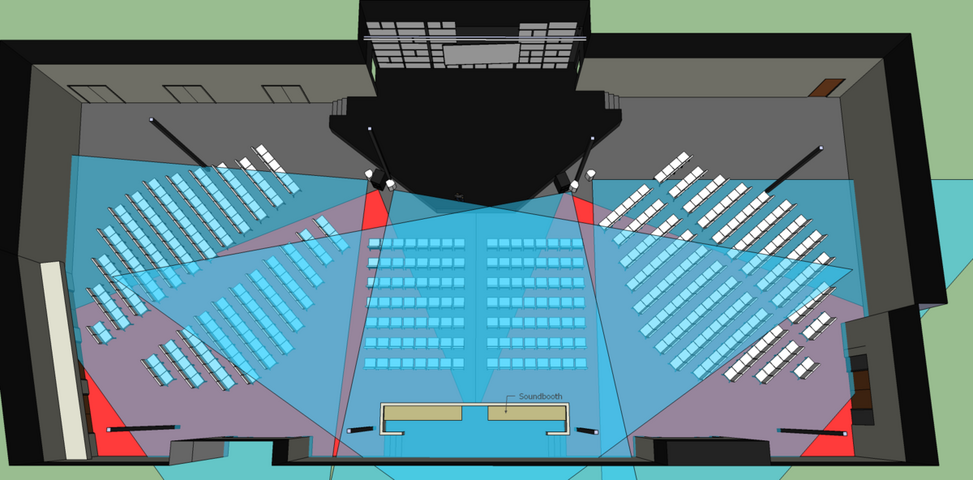niccosuave
Member
Hello All,
I currently work for my church and we've been in our building for about a year and a half. We have the same PA system that we had when we were mobile and haven't upgraded anything since. Where everything is placed right now there is not an even spread of an overall consistent sound, mainly during worship.
We're trying to re-position our speakers so that we have an even coverage throughout the auditorium, as well as figure out the best way to mix for the different sections. Here is our system:
Yamaha LS9-32:
| Omni 1/2 --> Drive rack --> Highs --> (2) Mackie SR-1530 [Mains]
Lows --> (2) EV TX-2181 [Subs]
| Omni 3 --> (2) Mackie 450 [In-fills]
| Omni 4 --> (2) Mackie 450 [Out-fills]
Right now the fills are set to post fader, and have there own levels on 2 different mix groups, making the sound engineer (volunteer for the weekend) mix 3 different layers!
We'd like to have the fills set to pre, and everything set to nominal. Also re-positioning the fills.
This is an overhead of our our auditorium is set up currently with seats:
http://imageshack.us/a/img713/7589/6co.png
Here is a close up of the direction the speakers are facing:
ImageShack® - Online Photo and Video Hosting
The height of the room is 18' 3" from floor to beams. Our fills are aimed like so:
http://imageshack.us/a/img854/7401/d0te.jpg
http://imageshack.us/a/img856/5716/0o0t.jpg
We're stuck as to how to better the equipment we have. How to aim, where to aim. How to patch out of our LS9.
Any help will be very much appreciated!
-Nicolas Hirajeta
I currently work for my church and we've been in our building for about a year and a half. We have the same PA system that we had when we were mobile and haven't upgraded anything since. Where everything is placed right now there is not an even spread of an overall consistent sound, mainly during worship.
We're trying to re-position our speakers so that we have an even coverage throughout the auditorium, as well as figure out the best way to mix for the different sections. Here is our system:
Yamaha LS9-32:
| Omni 1/2 --> Drive rack --> Highs --> (2) Mackie SR-1530 [Mains]
Lows --> (2) EV TX-2181 [Subs]
| Omni 3 --> (2) Mackie 450 [In-fills]
| Omni 4 --> (2) Mackie 450 [Out-fills]
Right now the fills are set to post fader, and have there own levels on 2 different mix groups, making the sound engineer (volunteer for the weekend) mix 3 different layers!
We'd like to have the fills set to pre, and everything set to nominal. Also re-positioning the fills.
This is an overhead of our our auditorium is set up currently with seats:
http://imageshack.us/a/img713/7589/6co.png
Here is a close up of the direction the speakers are facing:
ImageShack® - Online Photo and Video Hosting
The height of the room is 18' 3" from floor to beams. Our fills are aimed like so:
http://imageshack.us/a/img854/7401/d0te.jpg
http://imageshack.us/a/img856/5716/0o0t.jpg
We're stuck as to how to better the equipment we have. How to aim, where to aim. How to patch out of our LS9.
Any help will be very much appreciated!
-Nicolas Hirajeta
Last edited:




